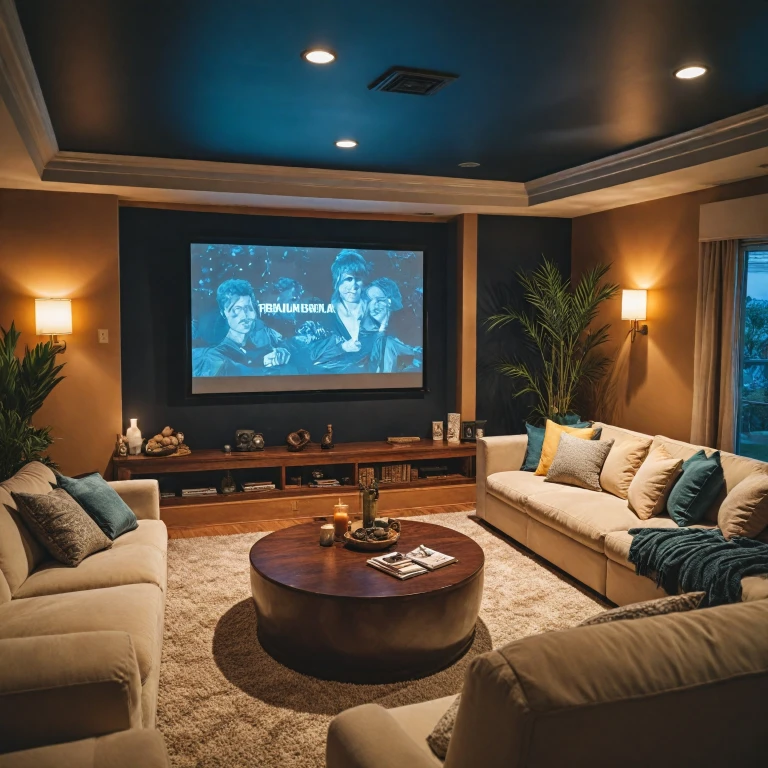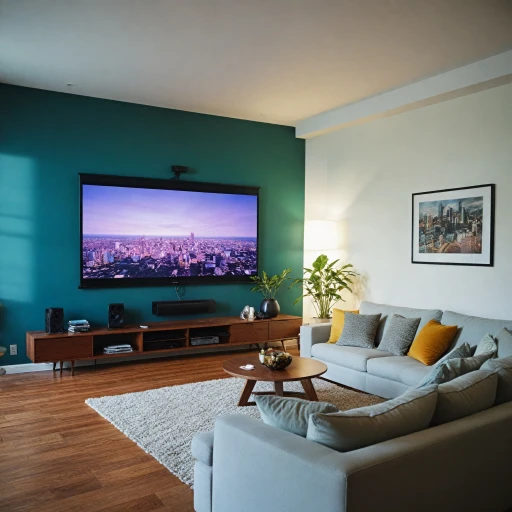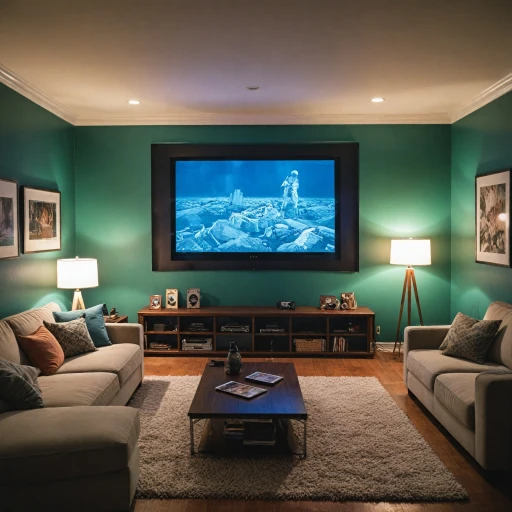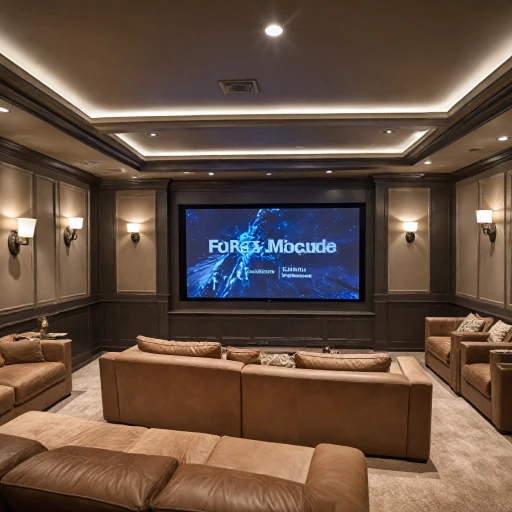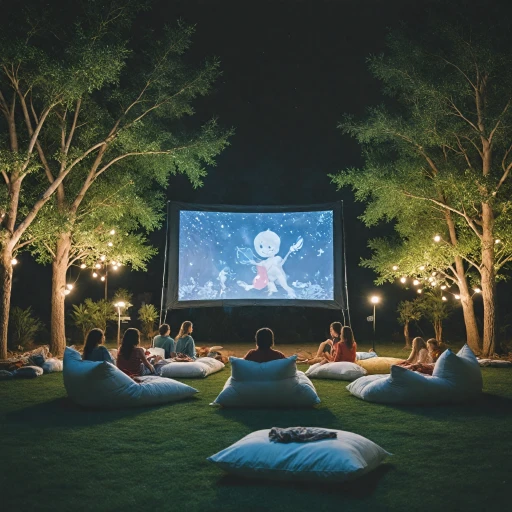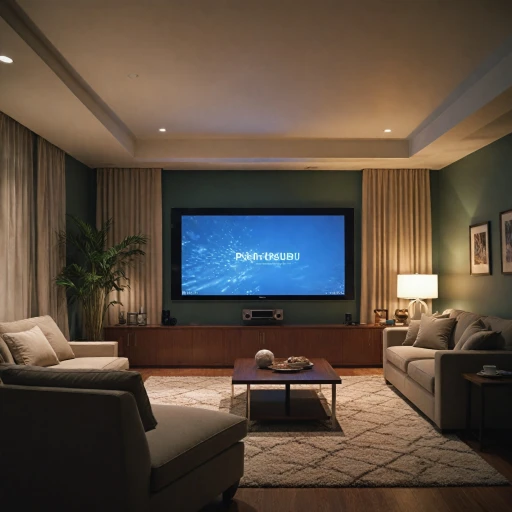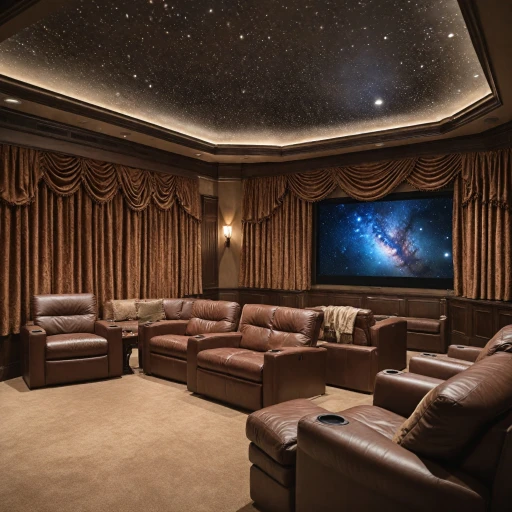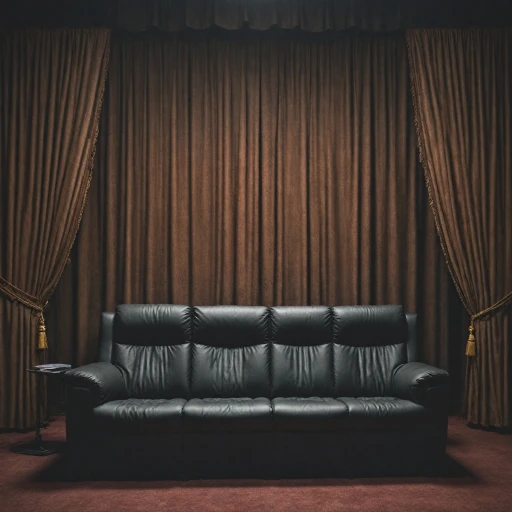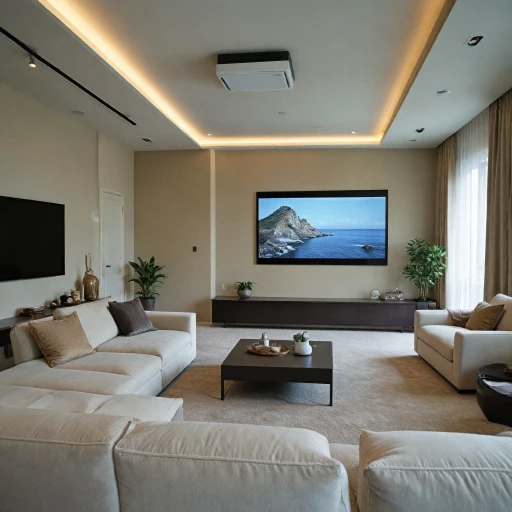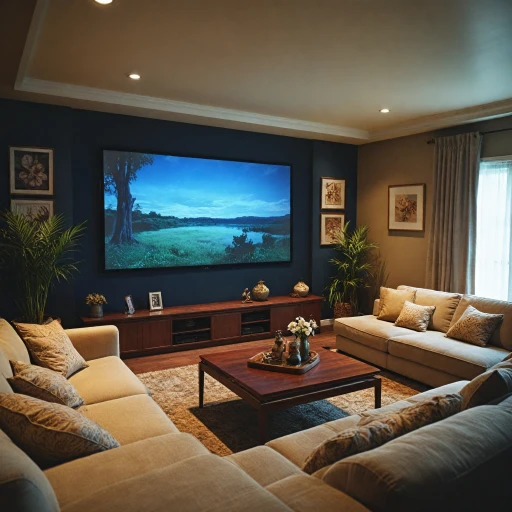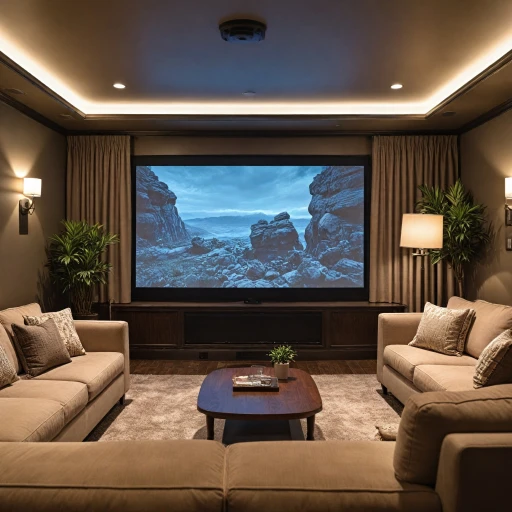Understanding Floor-Mounted Projector Screens
Exploring the Features of Floor-Mounted Projector Screens
Floor-mounted projector screens, also known as floor rising screens, are gaining popularity due to their sleek design and functionality. Unlike traditional screens that require ceiling or wall mounts, these screens offer a flexible setup, making them ideal for varying room layouts. A distinct feature of this type of screen is its motorized mechanism, which allows it to rise seamlessly from its base, transforming your space instantly.
When we talk about floor-mounted screens, it’s important to consider key aspects such as screen materials and size. The screens can range from standard matte white, suitable for ambient light conditions, to advanced materials like ambient light rejecting (ALR) fabrics that optimize image quality in brighter environments. For those interested in enhanced viewing, choosing the perfect hangable projector screen can offer further insights.
Moreover, floor-mounted projector screens support different types of projectors, from short throw to ultra short throw. This versatility means that no matter your projector's throw distance, these screens are equipped to deliver high-quality visuals. Renowned brands like Elite Screens and Vividstorm offer products with diverse feature sets, ensuring that you can find an item matching your price and functionality needs, whether it be a budget-friendly price lite option or a premium diag HDTV screen.
Read on to discover additional benefits, installation tips, and maintenance advice for your floor-mounted projection screen.
Benefits of Using a Floor-Mounted Projector Screen
Advantages of Incorporating Floor-Mounted Screens
Opting for a floor-mounted projector screen can significantly boost your home theater experience in various ways. These screens, often known as floor rising or motorized floor screens, combine the benefits of traditional projector screens with enhanced functionality.- Space-saving Design: Floor-mounted screens provide a compact solution, particularly ideal for rooms where wall or ceiling mounting isn't feasible. When not in use, these screens can be neatly retracted and stored, saving valuable space.
- Motorized Convenience: Many floor-mounted projector screens come with motorized mechanisms, allowing you to raise and lower the screen with ease. This effortless operation is not only convenient but also adds a dash of luxury to your viewing experience.
- Versatile Viewing Angles: The portability of floor-mounted screens offers flexibility in setting up your projector wherever you see fit, adjusting positioning for different viewing scenarios. This is especially beneficial for those using short throw or ultra short throw projectors.
- Compatibility with Enhanced Technology: Some floor screens are compatible with both standard and ALR (ambient light rejecting) projectors, improving picture quality by rejecting excess ambient light. Brands like Vividstorm and Elite Screens offer such options, elevating your movie nights.
- Improved Picture Quality: Screens like matte white or ALR provide a more vivid and sharp image, thanks to advanced technology that enhances color brightness and contrast, making your home entertainment truly immersive.
- Cost-Effective Solutions: Floor-mounted screens can often be found at a competitive sale price, bringing a high-quality viewing experience within reach without significant investment.
Choosing the Right Floor-Mounted Screen for Your Home Theater
Finding the Perfect Fit: Your Guide to Selecting the Ideal Floor-Mounted Screen
In the journey to creating an immersive home theater experience, choosing the right floor-mounted projector screen is crucial. The variety of options can appear daunting, but understanding your specific needs will simplify the process.
Start by considering the size of your room and the projector you are using. Whether you opt for a short throw or ultra short throw projector, ensuring compatibility with your chosen screen is essential. Short throw projectors are great for smaller spaces, where the projection screen needs minimal distance to deliver a large image.
Additionally, the screen material plays a significant role in your viewing experience. A matte white finish provides a neutral color, enhancing the color reproduction of your projector. However, if your viewing area has a lot of ambient light, consider an ALR (ambient light rejecting) screen, such as Vividstorm or products from Elite Screens, to maintain image quality despite the light challenges. Enhancing your home theater involves not just choosing the right screen, but also knowing the projector's capabilities to harmonize the overall setup.
The screen's diag (diagonal) size is another factor to weigh. Larger screens, such as a 100-inch diag HDTV, can create a cinema-like feel but ensure that your room can accommodate it. Check if your model is a motorized floor rising type, which offers easy setup and storage.
Finally, budget can guide your choice. Check the sale price and compare different models to find one that fits your pricing needs without compromising quality. Items from brands like Elite Screens often provide various price lite options without skimping on essential features.
Once you have evaluated these aspects, you are well on your way to enjoying a seamless integration of your floor-mounted rising projector screen, enhancing both your visual and spatial experiences at home.
Installation Tips for Floor-Mounted Screens
Simple Steps for Setting Up Your Floor Screen
Installing a floor-mounted projector screen can seem like a daunting task, but with the right approach, it can be straightforward and rewarding. Here are the steps to ensure your installation goes smoothly:- Identify the Right Spot
- Choose a location where the screen won't be obstructed by furniture or light sources. Ideally, the area should allow for a clear throw from your projector, accommodating both short throw and ultra short throw projectors.
- Unpack and Inspect the Screen
- Once you unbox your projector screen, whether it's an elite motorized floor rising model or a more basic, matte white screen, check for any defects or missing items before you begin.
- Position the Screen
- For floor rising screens, ensure the base is stable. Placement is crucial, especially for screens with light rejecting technology, like ALR screens, which can dramatically enhance image quality in ambient light conditions.
- Projector Alignment
- Before finalizing the position of your screen, set up your projector. This step is essential if you’re using short throw or ultra short throw projectors, as these require precise alignment.
- Adjust the Screen’s Height
- Test the screen by raising it to the desired height. If you have a motorized option, this can be done remotely and can help easily achieve the perfect diag size for your diag HDTV.
- Fine-Tune for Optimal Viewing
- Check the projection for any keystone distortion or alignment issues. Make necessary adjustments to the projector or screen positioning.
- Secure Everything in Place
- Once satisfied with the setup and picture quality, secure the projector and screen positions to prevent accidental movement.
Maintenance and Care for Your Floor-Mounted Projector Screen
Regular Cleaning and Maintenance
To keep your floor-mounted projector screen in top condition, it’s essential to implement a regular cleaning routine. Dust and debris can affect the screen’s performance, especially for those with white or matte white finishes. Use a microfiber cloth to gently wipe off any surface dust. If deeper cleaning is needed, a slightly damp cloth should suffice—avoid harsh chemicals to prevent damage to the screen surface.
Inspecting Mechanisms
Given the popularity of motorized floor screens and rising projector models, it’s critical to regularly check the functionality of the motor and other mechanisms. Listen for unusual sounds when in operation, which could indicate wear and tear. An early diagnosis of issues can prevent costly repairs down the line.
Maintaining Projector Compatibility
Screen and projector compatibility is crucial for optimal performance. Depending on the type of projector you own, whether it’s short throw, ultra short, or long throw, assess if your projection screen aligns with the specifications. This is especially vital if you’re using ambient light rejecting (ALR) fabrics, which are more effective with specific types of projectors.
Adapting to Screen Deterioration
Over time, fabrics may show signs of wear such as fading. Consider rotating screen placement regularly to ensure even exposure, particularly for locations with variable light conditions. If your screen comes with a fabric exchange option from brands like Elite Screens or Vividstorm, utilize these services to renew your viewing experience.
Checking for Structural Integrity
A projection screen's frame stability is key to maintaining a flat, undistorted image. Regularly inspect the floor rising mechanism and frame for any signs of weakening or loosening. Keeping an eye on these aspects will help preserve the screen’s integrity, thereby enhancing your home theater experience.
Warranty and Professional Assistance
Lastly, it’s worth noting that many projector screens offer a warranty which can be valuable if any issues arise. In situations where troubleshooting and maintenance exceed your capabilities, contacting a professional or the manufacturer ensures that you’re taking the right steps without risking further damage.
Troubleshooting Common Issues with Floor-Mounted Screens
Addressing Issues with Your Floor-Mounted Projector Screen
Every home theater setup with a floor-mounted projector screen can face occasional issues. Here’s how to troubleshoot common problems to ensure your viewing experience remains fluid and enjoyable.
Image Quality Concerns
If you notice that your screen isn't displaying images as sharply as expected, consider inspecting the screen surface. Dust or dirt accumulation can impact image clarity. A gentle cleaning with a microfiber cloth on the ultra short throw screen can work wonders. Check your projection setup and adjust the throw distance as needed. With the right configuration, both short and ultra short throw projectors should project sharp and vibrant images.
Screen Movement Issues
For motorized floor screens, you might encounter hiccups in the screen's rising and lowering movements. Be sure to check the power source first. Additionally, listen for any unusual sounds that might indicate mechanical issues. If your model has adjustable settings, you may need to recalibrate it for smooth operation.
Maintaining Ambient Light Rejection
Floor-mounted screens often come with ambient light rejecting (ALR) features. If external light is hindering your viewing, assess your room’s lighting conditions. Adjust curtains or install light-blocking blinds to enhance the ALR capabilities of the screen, ensuring richer contrast and deeper colors even in well-lit environments.
Alignment and Calibration
Occasionally, the alignment of the projector with the screen might be off, especially if the setup changes. Use any frame projector settings provided by the manufacturer like Vividstorm or Elite Screens to calibrate the alignment correctly. Ensure your projection screen is perfectly parallel to the projector for uniform image distribution.
Technical Support and Replacement Parts
If issues persist, referencing the manufacturer's guidelines for troubleshooting can often illuminate the problem. Some problems may require a professional assessment. Know the terms of your purchase, including any warranties or sale price stipulations, to facilitate replacements or repairs if necessary.
By maintaining a regular check on your floor rising screen's components, and ensuring they're all in good order, you can prevent most common issues from affecting your home theater experience.
